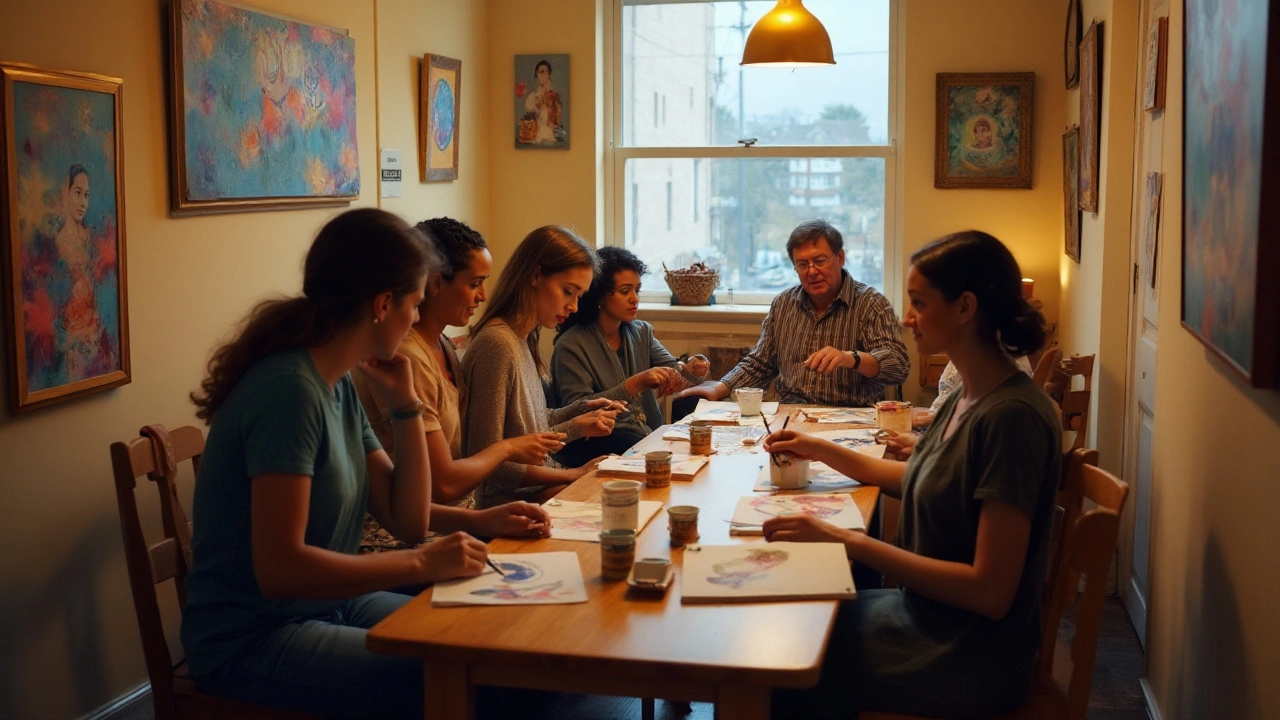Want to feel calmer without pills or long therapy sessions? Expressive therapy uses art, music, movement, drama, and writing to change how you feel. It doesn’t require talent—just a willingness to try something different. Many people notice lowered stress, better sleep, or clearer thinking after short, regular practices.
Expressive therapy covers several approaches you can try right away. Art therapy means drawing, painting, or even collaging to express emotions. Music therapy uses listening, singing, or rhythm to shift mood and energy. Dance or movement therapy gets tension out of the body and can quickly break a worry spiral. Drama and role-play let you practice reactions in a safe space. Writing—like free journaling or poetry—helps sort messy thoughts into clearer ones.
Each method targets the body and mind differently. Art gives a visual outlet when words feel stuck. Music moves emotions fast. Movement releases built-up stress in muscles. The mix is powerful because it works on both feelings and physical tension.
Start small. You don’t need special gear or training. Try one of these 10–15 minute exercises:
Try one exercise three times over a week and note any changes in mood or sleep. Small routines beat intense one-off sessions.
If you want structure, look for community groups, drop-in workshops, or a certified expressive therapist. Expressive therapies can complement talk therapy, medication, or physical rehab. If you’re on TRICARE or another plan, ask your provider whether creative therapies, group sessions, or related mental health services are covered.
Warning signs to see a professional: if creative work brings up intense trauma, makes you feel worse, or you can’t stop harmful behaviors. A trained therapist can hold those feelings safely.
Expressive therapy isn’t magic, but it’s practical. Try simple, repeatable creative moves that fit your day. You might be surprised how a short sketch, song, or stretch clears space to think and breathe again.

Creative Arts Therapies are gaining recognition as innovative approaches in holistic health care, offering mental and emotional healing through various expressive arts. By tapping into practices such as art, music, dance, and drama therapy, individuals can find renewed pathways to wellness. These therapies harness creativity in safe, nurturing environments, helping people explore thoughts and feelings that might be challenging to express otherwise. They are proving especially beneficial for mental health conditions, PTSD, and chronic illnesses, making them a valuable addition to traditional healthcare practices. In this article, we'll explore their history, benefits, methods, and the future potential of creative arts therapies.
Read More